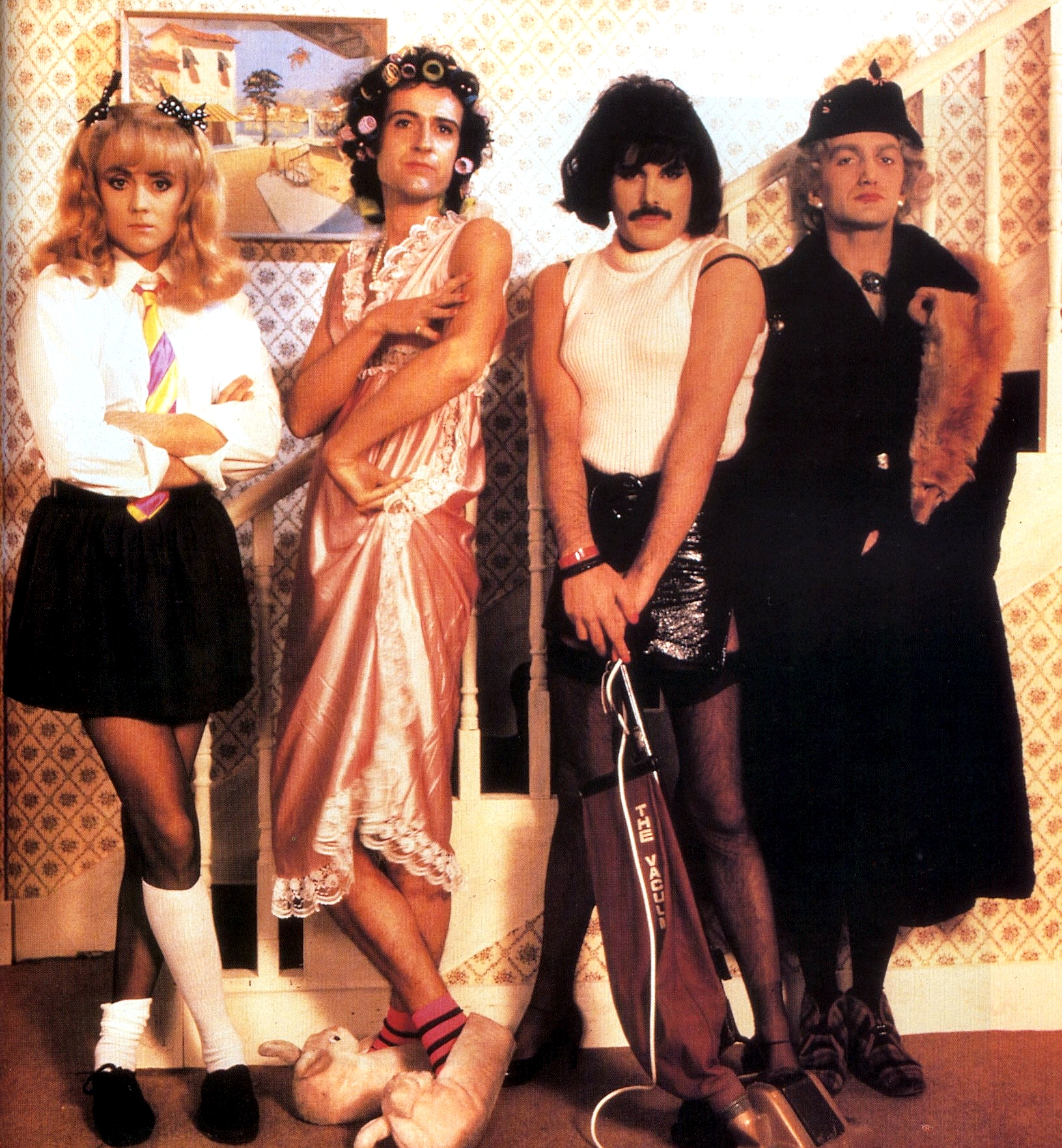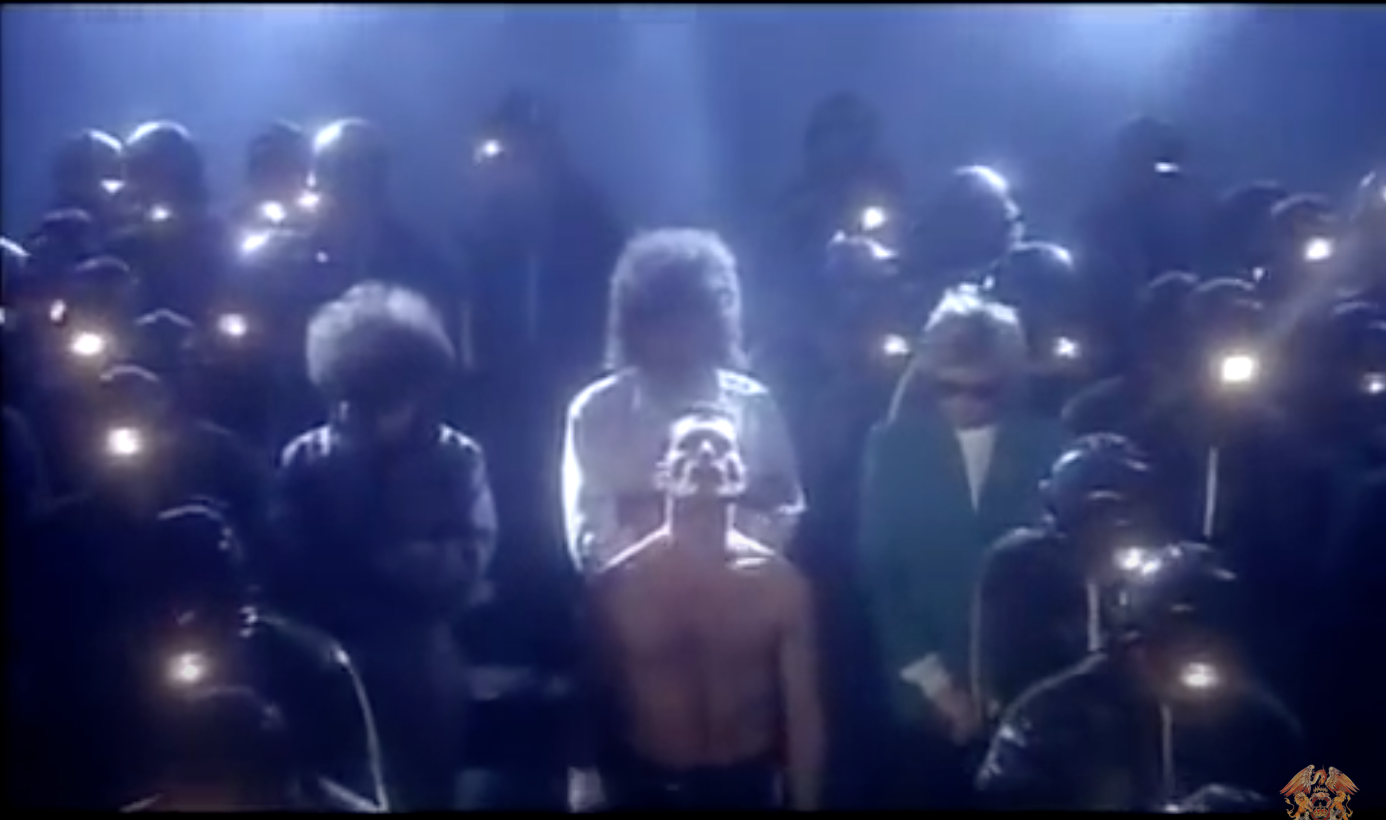
While the music certainly helps to further the messages regarding heterosexuality and conceptions of gender identity in “I Want To Break Free,” the sexualized, campy visuals also help to criticize gender dynamics of the 1980s and reevaluate gender identities. The video opens with all four members of Queen dressed entirely in drag. From the start, viewers are forced to reevaluate preconceived notions of gender as represented in music videos due to this campy, drag aesthetic. In the traditional sense, as noted by Julie Andsager and Kimberly Roe, “female characters were afforded less flexibility in the types of occupations they could portray” on MTV (2003, 83). However, by combining the aforementioned masculine, shouted sound with feminine drag outfits, the song takes on an entirely different meaning. As Mercury-in-drag sings the hook of the song, “I want to break free,” he is vacuuming the floor and singing directly to the camera.

Musically, the refrain is a nod to Mercury’s sexuality as a non-straight man, but visually, the refrain is used to comment on the lack of flexibility offered to women both in music videos and in real life. Interestingly enough, despite being somewhat well-received in Britain, many Americans were disgusted by the drag depicted in the video, which is why “I Want To Break Free” was banned from American MTV (Gaar 2018, 20). While drag is one of the more obvious components of gender and sexuality in the music video, Mercury’s careful use of color throughout the video also adds to the discussion of redefining gender roles and sexuality during the 1980s. Most importantly, the drag visual aesthetic paired with the glam rock sonic aesthetic serves as a statement in support of women’s rights. The drag in the beginning is arguably symbolism for women wanting to break free from established gender norms, destining the excess and power associated with masculinity that Mercury displays by the end of the video. This notion is consistent with the norms of gender in the 1980s, where men were often considered to have the power, and a woman’s desire to break free was a desire for the powers of masculinity.

In order to show Mercury’s “stage performance centered on a camp, ‘cloned’ style look, coupled with a strutting sexual knowingness,” “I Want To Break Free” utilizes bright colors against a dark background in a way that makes the characters of the music video seem both out of place within the video, but in unity with one another (Lynch 2003, 180). Bright colors against a plain background then help to create these surreal moments that control the viewer’s gaze. Right when the song opens, the drag outfits, particularly Mercury’s bright pink shirt, pop against a rather bland, simple background. As the song progresses, he opens a door in drag, revealing a dark room filled with people, and Mercury is shirtless in the center, with his light skin setting him apart from everyone else in the room. And then, after the second verse and during the guitar solo, Mercury is shown wearing a bright nude bodysuit which is contrasted with a black, empty background, accompanied by a group of other men who are also dressed in bright nude bodysuits. The scene is very sensual and extravagant, but the emptiness of the background forces the viewer to watch what is going on, which is a group of men who appear to be naked moving around on each other. As Ken McLeod (2001) explains, “in a world that conventionalises emotions and forbids homosexuality,” it is common for “the often outlandish and unreal nature” of rock to serve as a “common marker of gay identity” (200). In the case of “I Want To Break Free,” Queen uses these stark color contrasts to highlight what is being displayed on screen, and to normalize homosexuality and “the gay identity” from their elevated platform as a world-famous rock band.